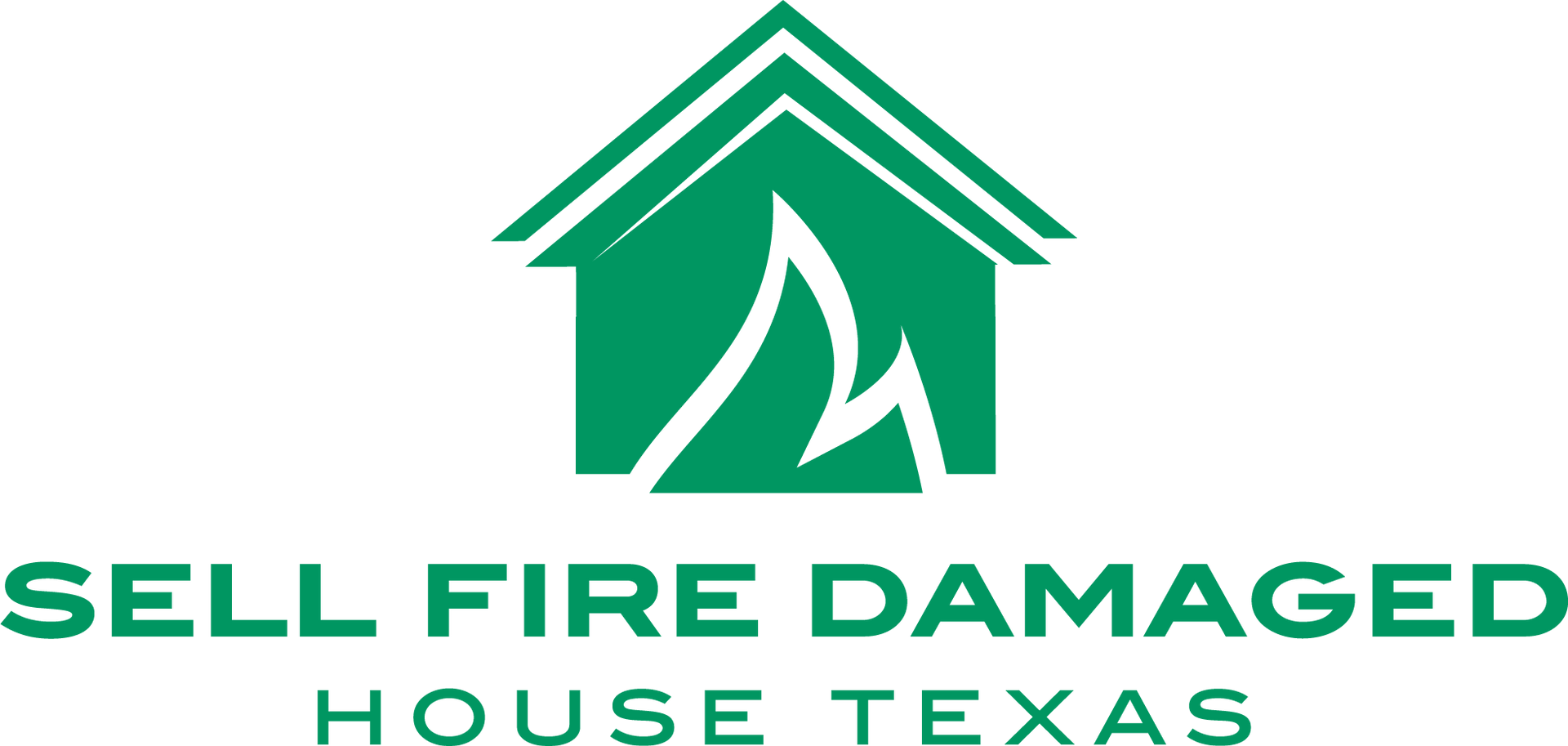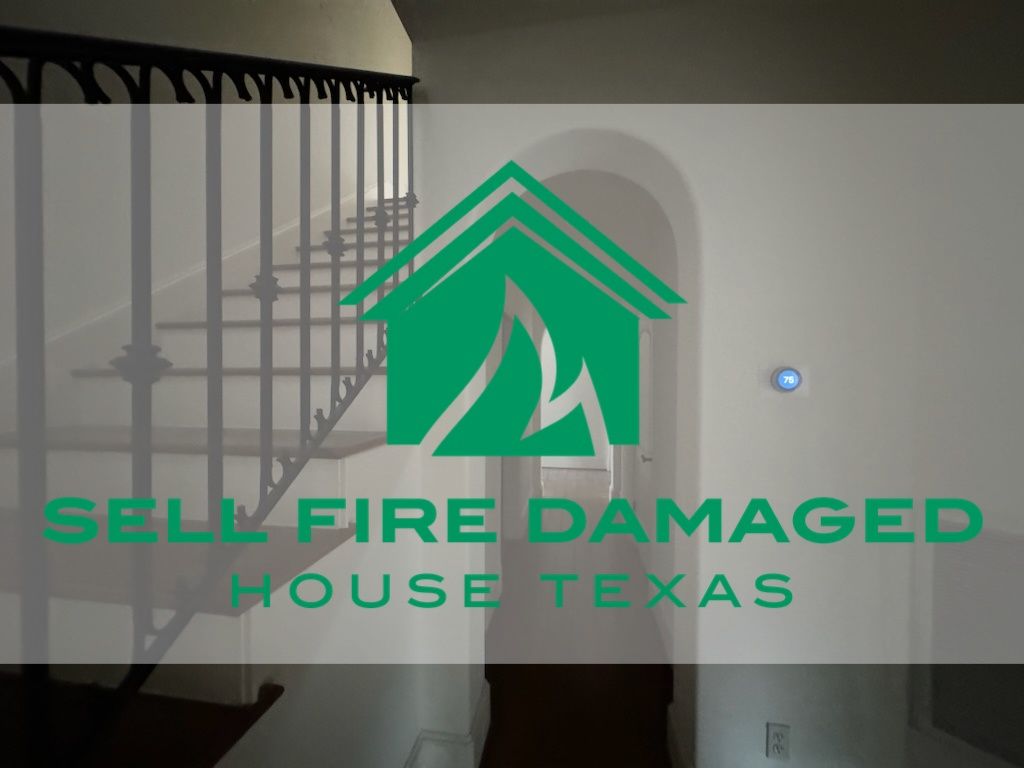Salvageable Items After A House Fire In Texas [Quick Guide]
Published on February 05th, 2025
Free Offer Form
We will get back to you as soon as possible.
Please try again later.
After a house fire, finding things that can still be used is important because it can help save money and keep things that matter — helping you get back on your feet after the fire.
You can often clean and reuse things like clothes and bedding, but you
must prioritize safety.
Carelessly touching or cleaning items covered in soot can cause breathing troubles, skin and eye irritation, and other serious health issues later.
This guide discusses what to save, how to clean items safely, when to get professional help, and more tips to help you and your family recover from the fire.
Identifying Salvageable Items After a House Fire In Texas
What you can save often depends on what things are made of and how much they're affected by fire, smoke, and water.
Many items — like wood flooring, glassware, metal objects, fabrics, electronics, personal items, and
even paper goods like books and documents — can often be cleaned and saved with the right approach.
Resilient Materials
Resilient materials like metal, glass, and ceramics often survive fires because they can withstand high temperatures and resist damage from smoke and water.
Unlike other flooring options, resilient floors like linoleum and vinyl remain stable even in uneven areas and may withstand the aftermath of fire better.
However, if any of these materials have melted, changed shape, or cracked, it's safest to throw them.
Although wood is typically considered porous, having to salvage hardwood floors is easier as they are more durable.
Hardwood and Other Resilient Flooring
Hardwood floors can be saved after a fire because they're usually covered with a protective coating. This prevents fire or water from penetrating the porous wood underneath.
Solid hardwood floors are sturdy and can be restored to their original form with light sanding and refinishing.
Glass and Ceramic Objects
Glass and ceramic objects, such as dishes and vases, commonly endure fires and can often be restored unless they're directly exposed to flames or extreme heat.
Glass is known for its heat resistance and typically withstands fires well. Similarly, most glass cookware can tolerate minor smoke damage without significant harm.
Resilient to high temperatures, they're generally "cleanable" after a fire, although ceramics and other porcelain may require professional cleaning.
Metallic Belongings
Metallic belongings like jewelry, silverware, and frames are often salvageable after a fire despite potential tarnishing or corrosion.
While extreme heat can compromise their integrity, most house flames don't reach temperatures high enough to melt metal.
Cleaning with vinegar and dish soap, light sanding, and repainting can restore metal objects.
Fabrics and Textiles
Fabrics and textiles are highly susceptible to smoke and soot damage, but professional cleaning techniques can often effectively eliminate odors and burn marks.
While charred or severely burned textiles are best discarded, clothing, carpet, upholstered furniture, and bedding with minor soot stains or water damage can usually be salvaged.
Clothing and Bedding Recovery
Clothing, blankets, bedding, and other textiles can often be salvaged if not directly exposed to the fire. Specialized washing and drying techniques can remove smoke and soot stains.
However, be cautious with children's clothing due to children's sensitivity to chemicals on fabric. It's best to throw away children's clothing after smoke exposure.
Professional emergency services may be needed if washing doesn't remove the smoke smell.
Electronics and Electrical Appliances
TVs, computers, fridges, and other electronics can often be saved if fires don't directly hit them.
Often, electronics and appliances can be fixed because some parts are easily replaceable or can be bought from stores. However, it's crucial to get them checked by an electrician to ensure they're safe to use.
This step is vital to avoid the risk of these items causing more fire-damaged property issues in the future.
Personal Belongings
Personal items like photographs, letters, and other sentimental belongings can often be saved with careful handling and special restoration methods.
Even some materials made of hard plastics might still be salvaged if they weren't directly touched by flames.
Saving these items can help keep a sense of normalcy in the tough times following a fire.
Paper Goods: Books and Documents
Quick action to dry and clean these paper goods can make a big difference.
If the items have moderate to heavy smoke damage, it's best to seek help from a professional restoration company.
Such companies have the technology and expertise to save even wet or moldy books, photos, and other documents.
Unrecoverable Items After a House Fire In Texas
![Salvageable Items After a House Fire in Texas [Quick Guide]](https://lirp.cdn-website.com/91121fb9/dms3rep/multi/opt/Hou+AL-1920w.jpeg)
While you can sometimes clean and recover items, disposing smoke-damaged items is also important after a fire.
The damage from smoke and intense heat may have altered their structure and potentially infused them with toxic substances.
This includes the following:
- Plastics that have melted or been stained
- Food items that may have been compromised by smoke and chemicals
- Personal care items
Plastic: Melted or Stained
Plastic items often become unsalvageable due to melting, warping, or irreversible staining from the high temperatures of the fire.
This includes everyday items like plastic toys, containers, and other household items, which can also absorb smoke and soot. This makes them unsafe even if they don't show visible signs of melting.
Also, plastic food packaging can be contaminated by firefighting chemicals.
Consumables
Be very careful with food. Anything edible that's been exposed to high heat, smoke, chemicals, or water might not be safe anymore.
Don't keep refrigerated or canned foods since they can absorb harmful toxins and chemicals that may have changed the food inside.
Packaged Foods
It's best to throw away packaged food items like cereals and snacks because toxic fumes can contaminate them. Even non-perishable food products that appear okay might not be safe.
The high heat from the fire can activate bacteria, and firefighting water and chemicals can also contaminate the food.
Throw away any open or damaged food items, even if they only have small stains or burn marks.
Refrigerated Perishables
If the refrigerator loses power for over six hours or has a smoky smell, the food within is likely unsafe. Also, discard any food if the fridge temperature exceeds 40° Fahrenheit, since this can cause spoilage.
But, of course, discarding all food, especially perishable food products, is still safest.
Personal Care Items: Cosmetics and Medicines
It's also important to discard all cosmetics, medicines, and similar products. Flames and smoke can change their chemical makeup and make them unsafe.
Even if makeup is expensive, it's not worth the risk to your skin and eyes. Get a new prescription for any medicines that you throw away.
Salvaging Procedures After a House Fire In Texas
The steps to salvage items depend on what they're made of and how much they're damaged.
A fire damage restoration company is able to salvage many things as long as the fire doesn't directly hit them.
These experts know how to handle different materials (whether hard, porous, or non-porous surfaces) and restore them as much as possible.
Restoring Glass, Ceramics, and Metal
You can often use simple cleaners like vinegar or baking soda and dish soap to clean glass, ceramics, and metal.
Glass and metal just need a good wash to look like new again. Ceramics might need more work and sometimes a professional's help because they soak up more smoke.
If you have lacquered glass walls, prevent mold growth by making sure they are dry before you re-paint them or add wallpaper.
Textiles and Fabrics: Cleaning and Restoring
Professional services use ozone treatment and dry cleaning techniques to remove soot and smoke smells from furniture covers, curtains, and clothes.
For items that didn't catch fire and are machine washable, you can clean them at home. Just add 1 cup of chlorine bleach and 5-7 tablespoons of Tri-Sodium Phosphate (TSP) to your wash.
This mix can help make your clothes or furniture covers clean and ready to use.
Managing Electronics and Electrical Appliances
Before using electronics and appliances after a fire, have an electrician or a professional assess them, as fires may deal hidden damage to electrical wiring and power controls.
Moreover, smoke and soot can seep into and harm power areas beyond where the flames reach.
Of course, don't forget to get a professional home inspection and contact your insurance company.
Preserving Personal Belongings
Talk to your insurance company. They can help you determine which things can be cleaned or fixed and which can't be saved.
Some personal property might still be okay after the fire, but others might be a total loss due to smoke or water damage.
Nonetheless, your insurance company can guide you on what to do next.
Restoring Paper Goods: Books and Documents
Restoration companies usually use pure latex rubber sponges to remove soot from the edges without damaging the paper.
For a
DIY approach, a mild detergent can be applied with a barely damp towel or sponge to clean the hard, non-porous surfaces of books to avoid excess moisture that could cause warping or mold.
Professional Assistance for Fire Damage Recovery in Texas
After a fire, professional restoration teams help fix and clean your property. Their expertise in handling fire damage ensures your property is properly cared for and restored.
Pack-out Services: What They Do
Pack-out services help after a fire by moving your property to a climate-controlled location for cleaning and fixing. They check, list, and photograph your property and belongings before packing and transporting them.
These services ensure a more thorough recovery than what might be achieved on-site and can protect your tangible property from further damage.
Selecting a Professional Restoration Service
Look for a service provider with the right certifications, proven experience with fire emergency services, and positive client feedback.
A good restoration company should:
- Offer fast-response services
- Be transparent about their processes
- Provide a clear plan and estimate before starting work
Remember to select a company that can safely and effectively restore your property.
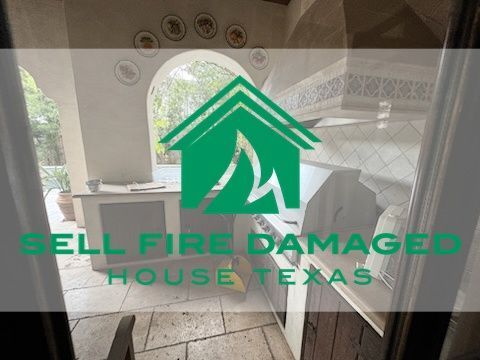
Safety Precautions During Fire Damage Recovery In texas
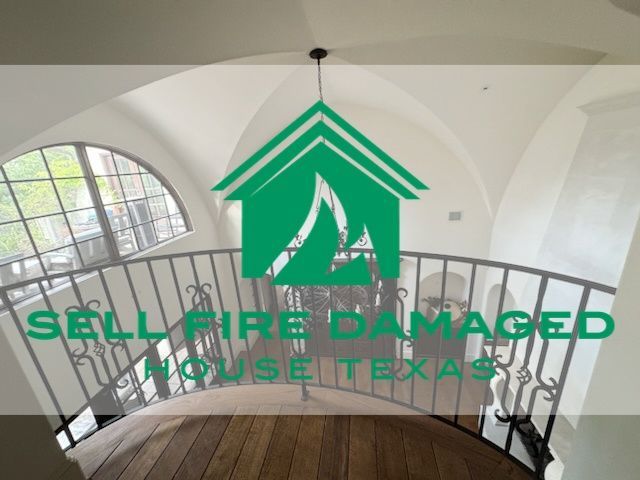
Clean and sanitize everything. Don't sort or clean up burnt property items by yourself because it can be dangerous.
Finally, be careful with items that have touched smoke since they may have harmful particles.
Smoke Particle Contamination Risks
When things burn, they create soot that can be harmful. These soot particles stick to walls and other surfaces, harming your health.
To stay safe, try to limit exposure to affected areas.
If you need to go into a place with smoke damage, wear a respirator mask that filters out the contaminated air. This helps protect your lungs from the smoke particles that can make you sick.
Safety Measures with Recovered Items
Here are some basic steps for handling items recovered during fire damage restoration:
- Clean and sanitize items you save from a fire to get rid of soot and smoke.
- If furniture or other items are too damaged, throw them away.
- Don't try to clean up burnt things by yourself.
- Determine what your insurance covers and report any damaged items.
- Handle and store saved items carefully.
Post-Restoration Care for Salvaged Items in Texas
Check your insurance to understand how it covers smoke damage. Some policies replace items with new ones, while others pay less for older items.
Also,
always seek professional advice to see which items are safe because fire extinguishers' chemicals might stick to them.
Maintenance Tips for Recovered Items
To care for items after a fire, clean them regularly based on their material, keep them in proper storage, and regularly check for damage like mold or rust.
FEMA recommends the following tips:
- Washing clothing and household items before use
- Disinfecting and deodorizing soft furnishings with appropriate cleaners
- Avoiding odor-masking sprays for a proper restoration
Ensuring Durability of Salvaged Items
To ensure the durability of fire-salvaged items, properly clean and dry them as soon as possible. This can help prevent mold and other forms of deterioration.
Additionally, storing these items in a cool, dry place
away from direct sunlight can also help preserve their integrity.
Navigating Insurance Claims After a House Fire in texas
The two most important house fire insurance tips are to document damages and verify your insurance policy coverage.
These steps are key for navigating insurance claims effectively — from submitting your documentation and claim to handling insurance adjuster post-house fire for the restoration or replacement of your belongings.
Documenting Fire Damage for Insurance
When you document the fire or smoke damage for an insurance claim, you must take sufficient photos and videos as proof.
Also, make a list of all your things that were damaged by the fire or smoke.
Doing this as soon as possible helps more accurately show the insurance adjuster how much was damaged so you can get help fixing or replacing your items.
Process of Claiming Insurance for Damaged Items
Start the claims process by filing a claim and notifying your insurance about the incident, including all the paperwork and evidence of the damage.
After filing your claim, the insurance company will assign a claims adjuster to look into your case and help you with the next steps.
Replacement and Restoration: What Insurance Covers
Insurance often covers fixing or replacing damaged items, but there's a limit. It pays based on the item's current market value, considering wear and tear.
This coverage helps pay for repairs to your home and for new clothes, furniture, and appliances if they are damaged.
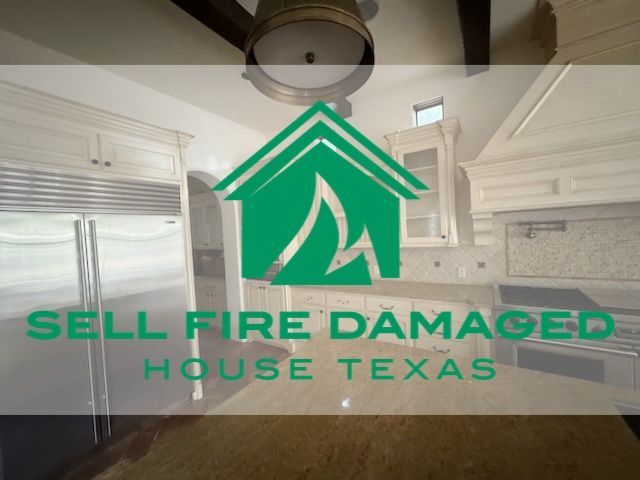
Frequently AskedQuestions
Discover more info about salvaging items after a house fire.
What Items Are Typically Salvageable After a House Fire?
You can salvage hardwood floors, glassware, metal objects, fabrics, electronics, personal items, and even paper goods since they can often still be cleaned.
How Can I Clean and Restore My Items After a House Fire?
In the house fire aftermath, professional services use techniques like ozone treatment and dry cleaning for fabrics.
However, simple cleaners like vinegar or dish soap can work for glass, ceramics, and metal. Meanwhile, electronics should be checked by technicians.
What Are the Risks Associated With Salvaging Items After a Fire?
Some of the risks include exposure to harmful soot and smoke that can cause health issues like respiratory problems and skin and eye irritation. Some items might also be unsafe due to chemical substances.
When Should I Consider Professional Help for Salvaging Items After a House Fire?
It is often best to seek professional help when dealing with delicate items. They can also help keep your future home clean and safe from soot damage from your salvaged items.
How Can I Ensure the Longevity of My Salvaged Items?
To ensure longevity, clean and dry items properly ASAP, store them in a cool, dry place away from direct sunlight, and regularly check for any signs of damage or deterioration.
Conclusion
Recovering from a house fire is a difficult process that requires quick decision-making about what to salvage and how to repair the damage.
Getting help from professionals can make this process easier and ensure that the repairs are done well.
It's important to document everything for insurance purposes to ensure proper compensation.
In addition, safety should always be the top priority during the recovery process. If you are unsure about any aspect of the recovery, seek guidance from experts to ensure a successful outcome.
Free Offer Form
We will get back to you as soon as possible.
Please try again later.
We Buy fire damaged homes all over TX
List of Services
-
Houston
-
San Antonio
-
Dallas
-
Austin
-
Fort Worth
-
El Paso
-
Arlington
-
Corpus Christi
-
Plano
-
Lubbock
-
Laredo
-
Irving
-
Garland
-
Frisco
-
McKinney
-
Grand Prairie
-
Amarillo
-
Brownsville
-
Killeen
-
Denton
-
Mesquite city
-
Pasadena
-
McAllen
-
Waco
-
Midland
-
Carrollton
-
Lewisville
-
Abilene
-
Pearland
-
Round Rock
-
College Station
-
Richardson
-
The Woodlands
-
League City
-
Odessa
-
Beaumont
-
Allen
-
Sugar Land
-
Tyler
-
New Braunfels
-
Edinburg
-
Wichita Falls
-
Conroe
-
San Angelo
-
Temple
-
Bryan
-
Mission
-
Georgetown
-
Baytown
-
Atascocita
-
Longview
-
Pharr
-
Flower Mound
-
Cedar Park
-
Mansfield
-
Missouri City
-
Leander
-
Harlingen
-
North Richland Hills
-
San Marcos
-
Pflugerville
-
Victoria
-
Rowlett
-
Spring
-
Wylie
-
Euless
-
Kyle
-
DeSoto
-
Texas City
-
Port Arthur
-
Little Elm
-
Burleson
-
Galveston
-
Rockwall
-
Grapevine
-
Bedford
All Rights Reserved | Sell Fire Damaged House Texas
Terms & Conditions - Privacy Policy - Sitemap
